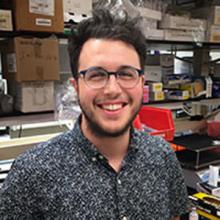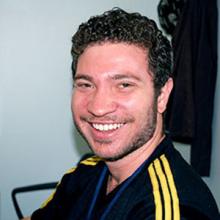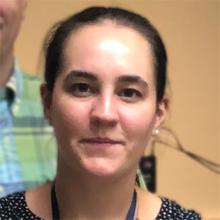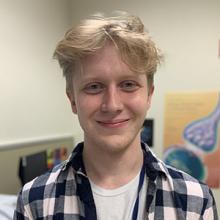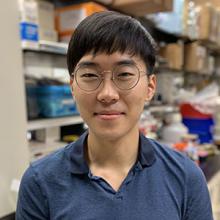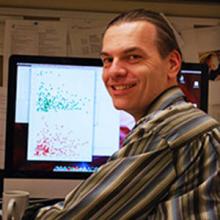Laboratory on Neurobiology of Compulsive Behaviors (LNCB)

Contact Information
- Office: (301) 443-7695
- Lab: (301) 443-3769
- Fax: (301) 480-8035
- Mailing Address
Laboratory on Neurobiology of Compulsive Behaviors
5625 Fishers Lane, Room TN-41, MSC9411
Bethesda, MD 20892-9411
Overview of the Lab
The Laboratory on Neurobiology of Compulsive Behaviors aims to understand the causes of substance use disorder (SUD). More specifically, we focus on the neuronal mechanisms that drive the high motivation to consume substances of abuse in SUD, and the compulsive aspects of SUD that generate a loss of control over consumption. Given that only a portion of individuals who are exposed to substances of abuse develop SUD, we are particularly interested in understanding the mechanisms that create vulnerability to SUD. The long-term goal of this research is to improve the treatment and prevention of SUD.
Our recent studies suggest that the behaviors characterizing SUD may develop from an interaction between the effects of substances of abuse and the individual’s pre-existing neurobiology. To further probe this hypothesis, we are investigating the synaptic and circuit mechanisms that mediate reward-seeking, reinforcement, and the loss of control over consumption. We are carrying out a wide array of behavioral analysis and in vivo manipulations of neuronal activity to dissect the alterations to brain circuit function associated with SUD behaviors. Moreover, we are taking advantage of the individual variability of wild-type mice and leveraging the power of genetically engineered mouse models to understand what makes some brains more vulnerable to develop compulsive behaviors toward abused substances.
Lab Members
Selected Publications
Search for all publications from the Alvarez Lab on PubMed
D.A. Burke and V.A. Alvarez (2022) Serotonin receptors contribute to dopamine depression of lateral inhibition in the nucleus accumbens. Cell Reports 39(6):110795.
Razidlo, Fausner, Ingebretson, Wang, Petersen, Mirza, Swank, V.A. Alvarez and J.C. Lemos (2022) Chronic loss of muscarinic M5 receptor function manifests disparate impairments in exploratory behavior in male and female mice despite common dopamine regulation. Journal of Neuroscience
Markovic, Pedersen, Massaly, Vachez, Ruyle, Murphy, Abiraman, J.H. Shin, Garcia, Yoon, V.A. Alvarez, M.R. Bruchas, M Creed, J.A. Morón. (2021) Pain induces somatic adaptations in Ventral Tegmental Area Dopamine neurons to drive anhedonia-like behavior. Nature Neuroscience 24(11):1601—1613.
Al-Hasani, Gowrishankar, Schmitz, Pedersen, Marcus, Shirley, Hobbs, Elerding, Renaud, Jing, Y Li, V.A. Alvarez, J.C. Lemos and M.R. Bruchas (2021) Ventral tegmental area GABAergic inhibition of cholinergic interneurons in the ventral nucleus accumbens shell promotes reward reinforcement. Nature Neuroscience, 24(10):1414—1428.
Unger, Keller, Altermatt, Liang, Matsui, Dong, Hon, Yao, Sun, Banala, Flanigan, Jaffe, Hartanto, Carlen, Mizuno, Borden, Shivange, Cameron, Sinning, Underhill , Olson, Amara, Temple Lang, Rudnick, Marvin, Lavis, Lester, V.A. Alvarez, Fisher, Prescher, Kash, Yarov-Yarovoy, Gradinaru, LL Looger, L Tian (2020) Directed Evolution of a Selective and Sensitive Serotonin Sensor via Machine Learning. Cell 183(7):1986—2002.
M.F. Adrover, J.H. Shin, C. Quiroz, S. Ferré, J.C. Lemos, V.A. Alvarez (2020) Prefrontal Cortex-Driven Dopamine Signals in the Striatum Show Unique Spatial and Pharmacological Properties. Journal of Neuroscience 40(39), 7510—7522.
L.R. Halladay, A. Kocharian, P.T. Piantadosi, M.E. Authement, A.G. Lieberman, N.A. Spitz, K. Coden, L.R. Glover, V.D Costa, V.A. Alvarez, A. Holmes (2020) Prefrontal Regulation of Punished Ethanol Self-administration. Biological Psychiatry 87(11), 967—978.
Y. Ehinger, N. Morisot, S.A. Sakhai, K. Phamluong, M.F. Adrover, V.A. Alvarez, D Ron (2021) cAMP-Fyn signaling in the dorsomedial striatum direct pathway drives excessive alcohol use. Neuropsychopharmacology 46(2), 334—342.
K. LeBlanc, T. London, Ilona Szczot, M.E. Bocarsly, D. Friend, K. Nguyen, M. Mengesha, M. Rubinstein, V.A. Alvarez and A. Kravitz (2020) Striatopallidal neurons control avoidance behavior in exploratory tasks. Molecular Psychiatry 25(2), 491—505.
M.E. Bocarsly, D. da Silva e Silva, V. Kolb, K.D. Luderman, S. Shashikiran, M. Rubinstein, D.R. Sibley, L.K. Dobbs, V.A. Alvarez (2019) A Mechanism Linking Two Known Vulnerability Factors for Alcohol Abuse: Heightened Alcohol Stimulation and Low Striatal Dopamine D2 Receptors. Cell Reports 29(5):1147—1163.e5.
J.C. Lemos, J.H. Shin, V.A. Alvarez (2019) Striatal Cholinergic Interneurons Are a Novel Target of Corticotropin Releasing Factor. J Neurosci 39(29):5647—5661.
L.K. Dobbs, A.R. Kaplan, R. Bock, K. Phamluong, J.H. Shin, M.E. Bocarsly, L. Eberhart, D. Ron, V.A. Alvarez (2019) D1 Receptor Hypersensitivity in Mice With Low Striatal D2 Receptors Facilitates Select Cocaine Behaviors. Neuropsychopharmacology, 44(4):805—816.
A. Matsui, V.A. Alvarez (2018) Cocaine inhibition of synaptic transmission in the ventral pallidum is pathway-specific and medidated by serotonin. Cell Report 23(13), 3852–3863.
K.H. LeBlanc, T.D. London, I. Szczot, M.E. Bocarsly, D.M. Friend, K.P. Nguygen, M.M. Mengesha, M. Rubinstein, V.A. Alvarez, A.V. Kravitz (2018) Striatopallidal neurons control avoidance behavior in exploratory tasks. Molecular Psychiatry (epub ahead of print doi:10.1038/s41380-018-0051-3).
D.M. Friend, K. Devarakonda, T.J. O'Neal, M. Skirzewski, I. Papazoglou, A. Kaplan, J.S.Liow, S.G. Rane, M. Rubinstein, V.A. Alvarez, K.D. Hall, A.V. Kravitz. (2018) Basal ganglia dysfunction contributes to physical inactivity in obesity. Cell Metabolism 25(2), 312–321.
D.M. Lovinger, V.A. Alvarez (2017) Alcohol and basal ganglia circuitry: Animal models. Neuropharmacology 122, 46–55.
A. Matsui, V.A. Alvarez (2017) Undercover Power of Endocannabinoids: Postsynaptic Ion-Channel Modulator. Neuron 93(6), 1243–1244.
M.A. Hutchison, X. Gu, M.F. Adrover, M.R. Lee, T.S. Hnasko, V.A. Alvarez, W. Lu (2017) Genetic inhibition of neurotransmission reveals role of glutamatergic input to dopamine neurons in high-effort behavior. Mol. Psychiatry advanced online publication 14 February 2017; doi:10.1038/mp.2017.7.
P. Charbogne, O. Gardon, E. Martín-García, H.L. Keyworth, A. Matsui, A.E. Mechling, T. Bienert, T. Nasseef, A. Robé, L. Moquin, E. Darcq, S. Ben Hamida, P. Robledo, A. Matifas, K. Befort, C. Gavériaux-Ruff, L.A. Harsan, D. von Elverfeldt, J. Hennig, A. Gratton, I. Kitchen, A. Bailey, V.A. Alvarez, R. Maldoado, B.L. Kiefer (2017) Mu Opioid Receptors in Gamma-Aminobutyric Acidergic Forebrain Neurons Moderate Motivation for Heroin and Palatable Food. Biol. Psychiatry 81(9):778–788.
D.M. Friend, K. Devarakonda, T.J. O'Neal, M. Skirzewski, I. Papazoglou, A.R. Kaplan, J.S. Liow, J. Guo, S.G. Rane, M. Rubinstein, V.A. Alvarez, K.D. Hall, A.V. Kravitz (2017) Basal Ganglia Dysfunction Contributes to Physical Inactivity in Obesity. Cell Metab. 25(2), 312–21.
L.K Dobbs, J.C. Lemos, V.A. Alvarez (2017) Restructuring of basal ganglia circuitry and associated behaviors triggered by low striatal D2 receptor expression: implications for substance use disorders. Genes Brain Behav. 16(1), 56–70.
J.C. Lemos, D.M. Friend, A.R. Kaplan, J.H. Shin, M. Rubinstein, A.V. Kravitz, V.A. Alvarez (2016) Enhanced GABA Transmission Drives Bradykinesia Following Loss of Dopamine D2 Receptor Signaling. Neuron 90(4), 824–38.
L.K Dobbs, A.R. Kaplan, J.C. Lemos, A. Matsui, M. Rubinstein, V.A. Alvarez (2016) Dopamine Regulation Lateral Inhibition between Striatal Neurons Gates the Stimulant Actions of Cocaine. Neuron 90(5), 1100–13.
V.A. Alvarez (2016) Clues on the coding of reward cues by the nucleus accumbens. PNAS USA 113(10, 2560–2.
J.H. Shin, M.F. Adrover, J. Wess, V.A. Alvarez (2015) Muscarinic regulation of dopamine and glutamate transmission in the nucleus accumbens. PNAS USA 112(26), 8124–9.
K.B. Holroyd, M.F. Adrover, R.L. Fuino, R. Bock, A.R. Kaplan, C.M. Gremel, M. Rubinstein, V.A. Alvarez (2015). Loss of feedback inhibition via D2 autoreceptors enhances acquistion of cocaine taking and reactivity to drug-paired cues. Neurophsychopharm advanced online publication 21 January 2015; doi: 10.1038/npp.2014.336.
M.F. Adrover, J.H. Shin, and V.A. Alvarez (2014). Glutamate and dopamine transmission from midbrain dopamine neurons share similar release properties but are differentially affected by cocaine. J. Neurosci. 34 (9), 3183–3192.
C. Cui, A. Noronha, H. Morikawa, V.A. Alvarez, G.D. Stuber, K.K. Szumlinski, T.L. Kash, M. Roberto, and M.V. Wilcox (2013). New insights on neurobiological mechanisms underlying alcohol addiction. Neuropharmacology 67:223–232.
M.V. Wilcox, V.C. Cuzon Carlson, N. Sherazee, G.M. Sprow, R. Bock, T.E. Thiele, D.M. Lovinger, and V.A. Alvarez (2014). Repeated binge-like ethanol drinking alters ethanol drinking patterns and depresses striatal GABAergic transmission. Neuropsychopharmacology 39(3):579–594.
R. Bock, J.H. Shin, A.R. Kaplan, A. Dobi, E. Markey, P.F. Kramer, C.M. Gremel, C.H. Christensen, M.F. Adrover, and V.A. Alvarez (2013). Strengthening the accumbal indirect pathway promotes resilience to compulsive cocaine use. Nat. Neurosci. 16(5):632–638.
N. Sherazee, V.A. Alvarez (2013). DiOlistics: delivery of fluorescent dyes into cells. Methods Mol. Biol. 940:391–400.
A. Dobi, G.K. Seabold, C.H. Christensen, R. Bock, and V.A. Alvarez. (2011). Cocaine-Induced Plasticity in the Nucleus Accumbens Is Cell Specific and Develops without Prolonged Withdrawal. J. Neurosci. 31:1895–904.
P.F. Kramer, C.H. Christensen, L.A. Hazelwood, A. Dobi, R. Bock, D.R. Sibley, Y. Mateo, and V.A. Alvarez. (2011). Dopamine D2 receptor overexpression alters behavior and phsiology in Drd2-EGPFP mice. J. Neurosci. 31:126–32. Faculty of 1000 "Recommended" list.
E. Bello Gay, Y. Mateo, D.M. Gelman, D. Noaín, J.H. Shin, C.M. Bäckman, M.J. Low, V.A. Alvarez, D.M. Lovinger and M. Rubinstein (2011). Cocaine supersensitivity and enhanced motivation for reward in mice lacking dopamine D2 autoreceptors. Nature Neurosci. 14: 1033–8
V. Cuzon Carlson, G.K. Seabold, C.M. Helms, N. Garg, M. Odagiri, A.R. Rau, J. Daunais, and V.A. Alvarez, D.M. Lovinger and K.A. Grant (2011). Synaptic and morphological neuroadaptations in the putamen associated with long-term, relapsing alcohol drinking in primates. Neuropsychopharm. 36: 2513–28
B.N. Mathur, N.A. Capik, V.A. Alvarez, and D.M. Lovinger (2011). Serotonin induces long-term depression at corticostriatal synapses. J Neurosci. 31(20):7402–11.
M. Feyder, R.M. Karlsson, P. Mathur, M. Lyman, R. Bock, R. Momenan, J. Munasinghe, M.L. Scattoni, J. Ihne, M. Camp, C. Graybeal, D. Strathdee, V.A. Alvarez, P. Kirsch, M. Rietschel, S. Cichon, H. Walter, A. Meyer-Lichtenberg, S.G. Grant and A. Holmes. (2010). Association of mouse Dlg4 (PSD-95) gene deletion and human DLG4 gene variation with phenotypes relevant to autism spectrum disorders and Williams' syndrome. Am. J. Psychiatry 167:1508–17.
G.K. Seabold, J.B. Daunais, A. Rau, K.A. Grant, V.A. Alvarez. (2010). DiOLISTIC labeling of neurons from rodent and non-human primate brain slices. J. Vis. Exp. (41) pii:2081.
J.L. Brigman, T. Wright, G. Talani, S. Prasad-Mulcare, S. Jinde, G.K. Seabold, P. Mathur, M.I. Davis, R. Bock, R.M. Gustin, R.J. Colbran, V.A. Alvarez, K. Nakazawa, E. Delphire, D.M. Lovinger and A. Holmes. (2010). Loss of GluN2B-containing NMDA receptors in CA1 hippocampus and cortex impairs long-term depression, reduces dendritic spine density, and disrupts learning. J. Neurosci. 30:4590–600.
J. Cheng, X. Zhou, E.L. Miller, V.A. Alvarez, B.L. Sabatini, S.T. Wong. (2010). Oriented Markov random field based dendritic spine segmentation for fluorescence microscopy images. Neuroinformatics 8(3):157–70.
V.A. Alvarez , D.A. Ridenour and B.L. Sabatini. (2007). Distinct Structural and Ionotropic Roles of NMDA Receptors in Controlling Spine and Synapse Stability. J. Neurosci. 28:7365–76.
V.A. Alvarez and B.L. Sabatini. (2007) Anatomical and physiological plasticity of dendritic spines. Annu. Rev. Neurosci. 30:79–97.
V.A. Alvarez , D.A. Ridenour and B.L. Sabatini. (2006). Retraction of synapses and dendritic spines induced by off-target effects of RNA interference. J. Neurosci. 26:7820–5. Faculty of 1000 "Must Read" list.
S.F. Tavazoie*, V.A. Alvarez* , D.A. Ridenour, D.J. Kwiatkowski, B.L. Sabatini (2005). Regulation of neuronal morphology and function by the tumor suppressors Tsc1 and Tsc2. Nat Neurosci. 8, 1727–34. Faculty of 1000 "Recommended" list.
V.A. Alvarez , C. Chow, E.J. Van Bockstaele and J.T. Williams. (2002). Frequency-dependent synchronization of locus coeruleus neurons: role of electrotonic coupling. Proc Natl Acad Sci U S A . 99: 4032–6.
V.A. Alvarez *, S. Arttamangkul*, J. Whistler, M. van Zastrow, D. Grandy and J.T. Williams. (2002). mu-Opioid receptors: Ligand-dependent activation of potassium conductance, desensitization, and internalization. J Neurosci. 22: 5769–76.
V.A. Alvarez , S. Arttamangkul, and J.T. Williams. (2001). A RAVE about Opioid Withdrawal. Neuron 32: 761–763. New and Views.
V.A. Alvarez , Maubecin, F. Garcia-Hernandez, J.T. Williams and E. Van Bockstaele. (2000). Functional coupling between neurons and glia. J. Neurosci. 20: 4091–4098.
Other Lab Resources
NIH Resources
Collaborators
present
- Dr Jose A. Moron-Concepcion
- Washington University School of Medicine in St Louis - Washington University Pain Center Missouri, USA
- Dr. Michael R. Bruchas
- Dr. Christoph Kellendonk
- Columbia University Irving Medical Center New York, USA
- Dr. Dorit Ron
- University of California San Francisco San Francisco, California, USA
- Dr. Alexxai Kravitz
past
- Dr. Marcelo Rubinstein
- Instituto de Investigaciones en Ingeniería Genética y Biología Molecular (INGEBI CONICET) - Consejo Nacional de Investigaciones Científicas y Técnicas, Universidad de Buenos Aires (UBA) Buenos Aires, Argentina
- Dr. Kathleen A. Grant
- Oregon National Primate Center and OHSU, Oregon, USA
- Dr. Todd Thiele
- University of North Carolina at Chapel Hill, North Carolina, USA
- Dr. David Sibley
Alumni
|
Marlisa Shaw |
Sean Hernandez |
Image

Aya Matsui, PhD |
|
Wambura Fobbs, PhD |
Image
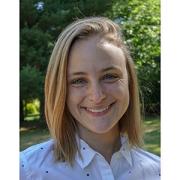
Katie Teresi |
Isabel Bleimeister |
|
Image

Marylin Bravo |
Image

Kathy Dai |
Image

Lauren Dobbs, PhD |
|
Image

Tanisha London, BSc |
Image
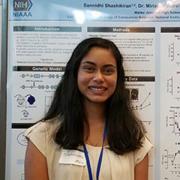
Sannidhi Shashikiran |
Image

Julia Lemos, PhD |
|
Image

Martin Adrover, PhD |
Image

Elizabeth Kirby |
Image

Mariah Blegen, BS |
|
Image
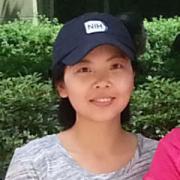
He, PhD |
Image

Alanna Kaplan, BS |
Image

Jilian Iafrati, PhD |
|
Image

Katie Holroyd, BS currently a neurology resident at the Brigham and Women's Hospital & Massachusetts General Hospital |
Image

Alice Dobi (Yue Wu), PhD |
Image

Mark Wilcox, BS currently a Ob/Gyn resident at the University of California, San Francisco and |
|
Image

Robert Fuino, BS currently a neurology resident at the University of Vermont Medical Center |
Image

Nyssa Sherazee, BA currently a junior architect in New York |
Image

Paul Kramer, BA |
|
Image

Eric Markey, BA |
Image

Gail Seabold, PhD |
Image

Christine Christensen, BS currently a graduate student of nursing at the University of Alabama |
Summer Students
| Summer Internship Program in Biomedical Research (SIP) | Amgen Scholars Program | ||
|---|---|---|---|
| Sannidhi Shashikiran | 2017 | Meredith Crenca | 2017 |
| Daniel Rosenberg | 2012 | Mariana Rocha | 2017 |
| Tracy Ma | 2010 | Vanessa Kolb | 2016 |
| Natasha Garg | 2009 | Lindsay Eberhart | 2016 |
| Allisen Goncalves | 2015 | ||
| (CCSEP) Community College Summer Enrichment Program | (HDTC) NINDS Health Disparities in Tribal Communities SIP | ||
|---|---|---|---|
| Gisselle Contreras | 2022 | Tawnjerae Joe | 2018 & 2019 |
| Amika Azinge | 2021 | ||
| Carloyn Bowering | 2017 | ||
| Michael Montesino | 2014 | ||




